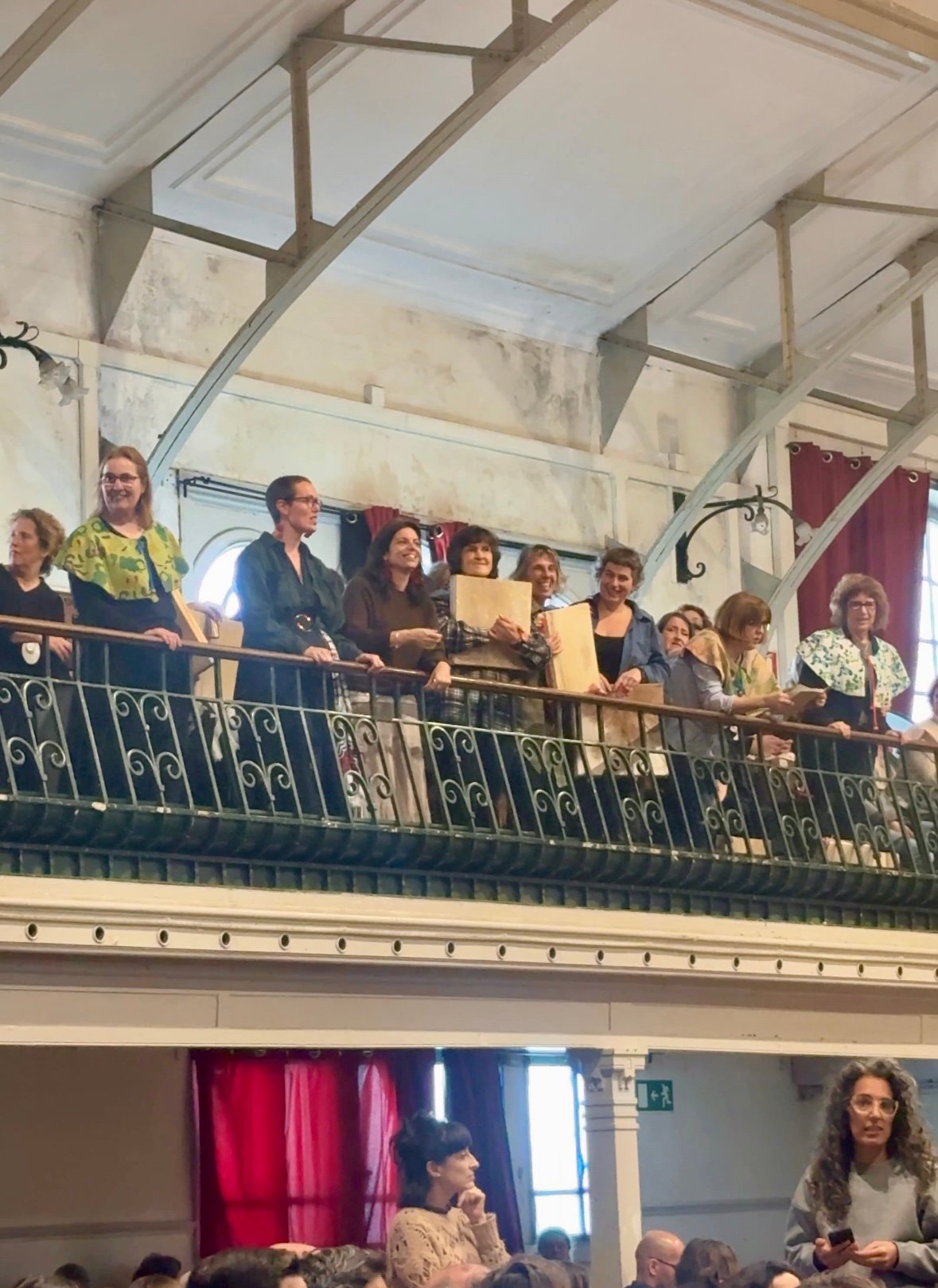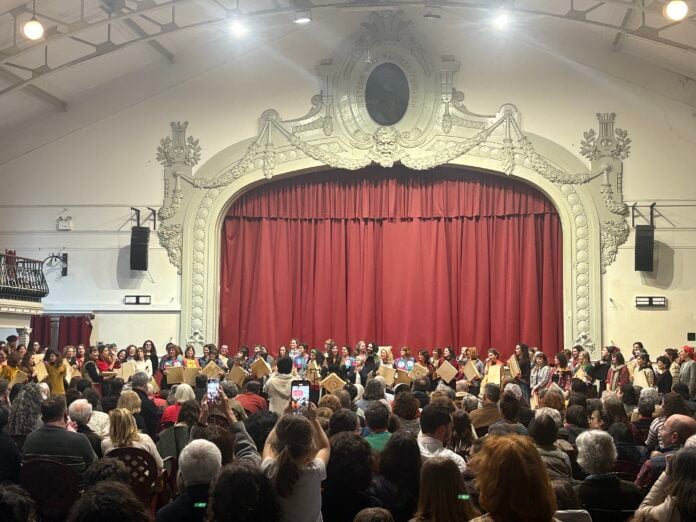For my last birthday, I was given an adufe by my Portuguese friends. And what, you may ask, is an adufe? I asked myself the same question as soon as I unwrapped my gift and played with it for the first time. The adufe, a square frame drum with Moorish origins that is traditionally played by women, is not nearly as famous as its more famous Portuguese cousin – the fado – but we think it should be! Let’s explore the rich history, construction, and evolving role of this fascinating instrument in Portuguese musical heritage.
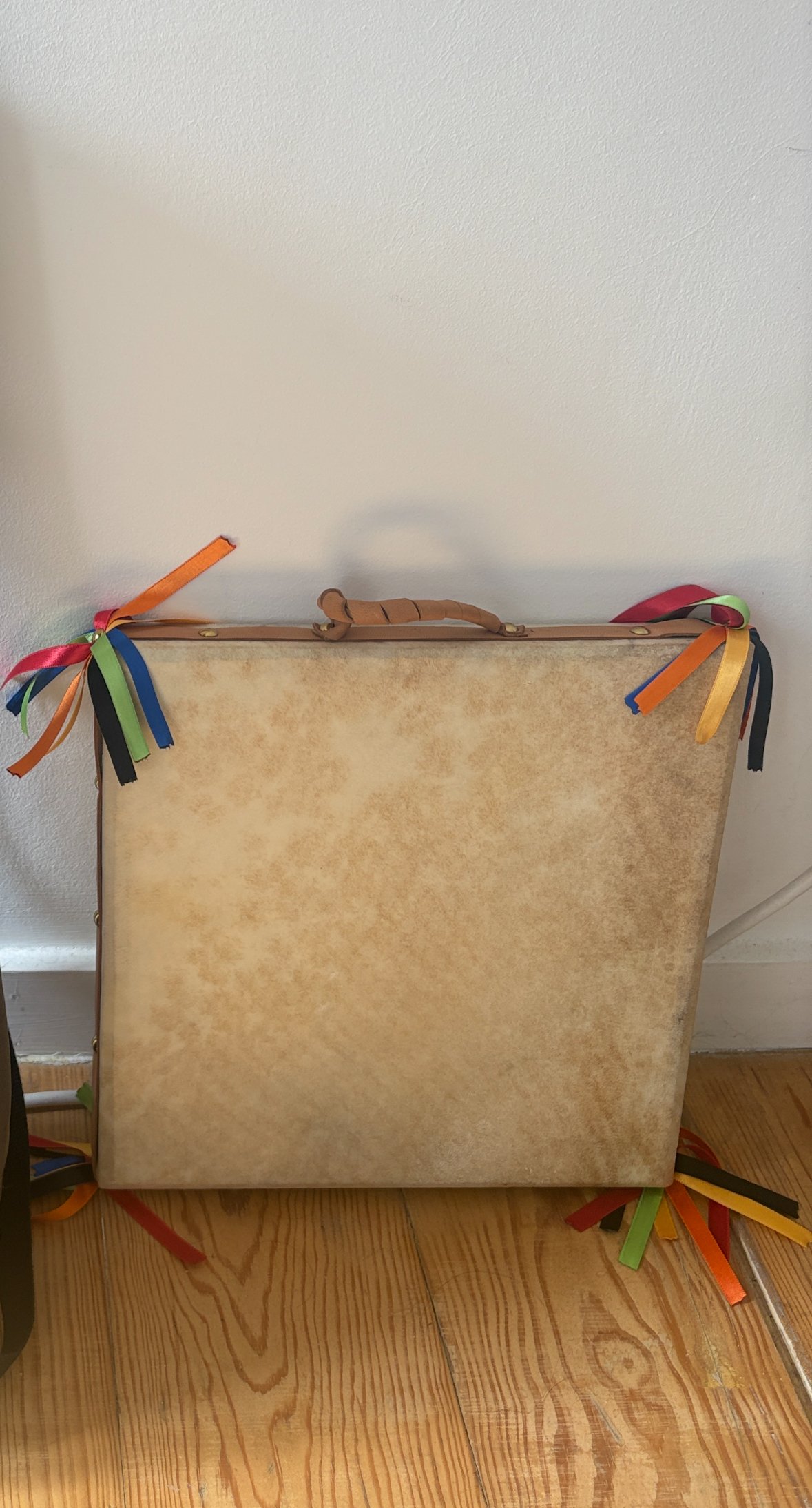
Origins and Historical Context
The adufe is a traditional square tambourine-like drum of Moorish origin, which is used in Portugal, Galicia, and other regions of Spain. Its history goes back centuries, and its name derives from the Arabic “al-duff.” In fact, historical representations of square drums appear in diverse range of sources – from ancient Egyptian tombs to medieval Iberian church porticoes, tiles, paintings, and sculptures. This extensive documentation clearly demonstrates that the adufe’s deep cultural roots across the Mediterranean region.
Please note that the Portuguese adufe should not be confused with similar instruments like the pandeiro mirandês from northeastern Portugal or various Spanish panderos (such as the pandero cuadrado de Peñaparda or Asturian, Galician, and Catalan square frame drums). In some border villages like Malpica do Tejo or Monforte da Beira, the instrument is locally called pandeiro or pindeiro.
Construction and Design
The adufe is a square or rectangular frame drum usually made of pine and completely handmade, over which is a goat’s skin is mounted. The size of the frame usually ranges from 12 to 22 inches on each side, and it is 1 to 2 inches thick. The skin is stitched on the sides, and the stitches are covered by a colored ribbon. In the interior, small seeds or stones, metal pieces, or rattles are placed to make pleasing sounds. Modern artisans have even adapted by using beer bottle caps as jingles.
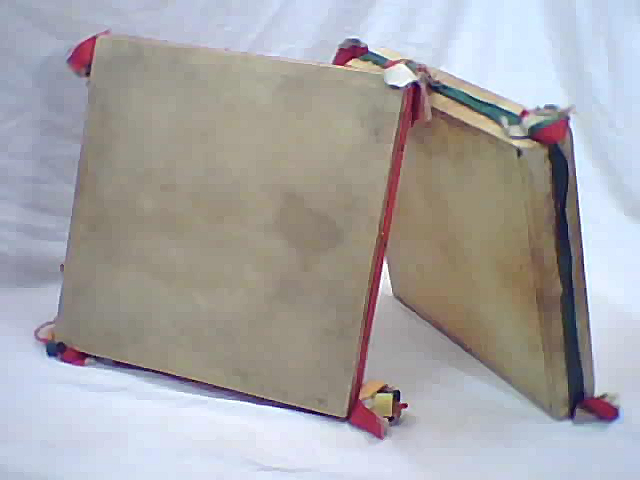
Performance Tradition
The adufe holds a special place in Portuguese culture as primarily a women’s instrument. Groups of female performers known as “Adufeiras” create music by simultaneously singing, dancing, and drumming in unison. This tradition remains particularly active in communities like Idanha-a-Nova and Paúl (Covilhã). Older women pass down songs and drumming techniques there to younger generations.
While predominantly a female tradition, some men are “allowed” to participate in these musical gatherings. The performances frequently accompany Catholic festivities including Marian feasts and celebrations of saints like St. John and St. Peter.
Musical Characteristics
The adufe repertoire, known as “cantigas de adufe,” typically follows either binary patterns called “de passo” (meaning “to walk”) or ternary patterns called “de roda” (meaning “to dance in circle”). These rhythmic patterns repeat throughout each song without variation. However, subtle differences exist between villages in lyrics, rhythmic nuances, and ornamentation.
Performance dynamics include a group leader, usually the most skilled singer/drummer, who initiates and concludes songs. There are subtle tempo variations that typically accelerate during choruses and decelerate before strophes. Groups use natural, comfortable pitching based on collective experience rather than absolute pitch references. Regional variations make inter-village collaboration challenging, as performers from different communities often play and sing with distinct styles.
Where Can You See an Adufe Performance?
For those interested in experiencing the adufe firsthand, we found two upcoming performances that showcase this traditional instrument in Lisbon:
A Cantadeira at Teatro Taborda
- When: Friday, May 2, 2025, Doors open: 8:50 PM, Show starts: 9:00 PM
- Teatro Taborda (Teatro da Garagem), Costa do Castelo 75, Lisboa
- Featuring: Joana Negrão, a singer-songwriter who draws from oral tradition. The performance includes voice recorded in real time, adufe, and bagpipes. This performance celebrates her 2024 album “Tecelã” which earned her an invitation to the 2025 Song Festival
WNMD 2025 · Concert No. 1 · Traditional Portuguese Instruments
- When: Friday, May 30, 2025, 7:00-7:45 PM
- Where: Centro Cultural de Belém – Átrio do Grande Auditório, Lisboa, Portugal
- Featuring: “Timeless Music / Música Sem Tempo”, Rui Silva (adufe), Bruno Gabirro (adufe & electronics), Miguel Amaral (Portuguese guitar), Joana Negrão and Ana Paula Rodrigues (cantadeiras)
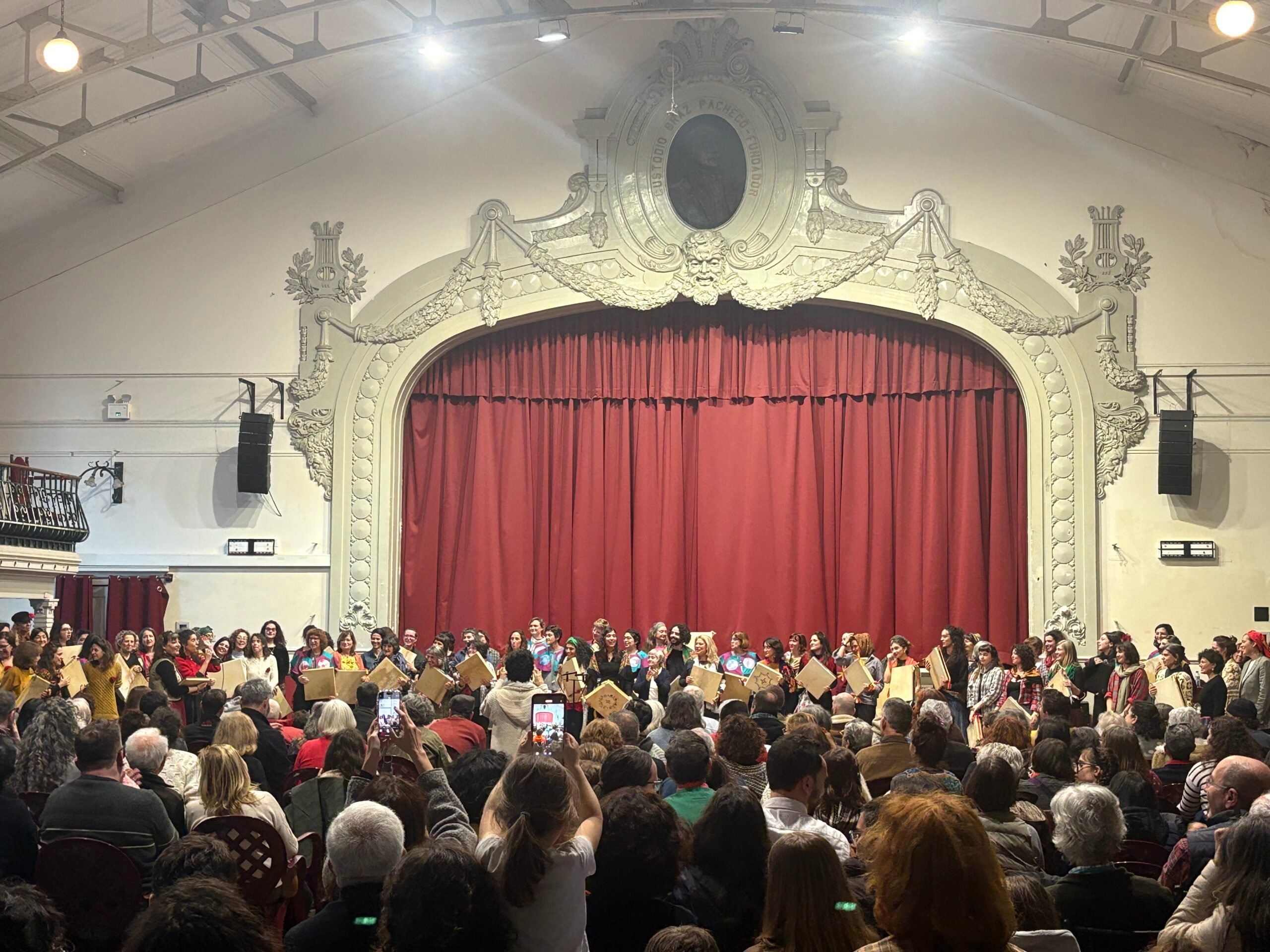
Preservation and Evolution
Several key moments have contributed to the adufe’s continued relevance in modern Portugal. José Afonso’s 1968 recording “Cantares do Andarilho,” featured his version of “Senhora do Almurtão.” Ricardo Pais’s 1997 theater piece “Raízes Rurais, Paixões Urbanas,” launched the now-prominent Adufeiras de Monsanto group. José Salgueiro’s oversized “adufões” (giant adufes) were featured at Expo 98 in Lisbon. The establishment of the Traditional Arts and Crafts Workshop by the Idanha-a-Nova Municipality in 2007 and the adoption of the adufe as the official symbol of the Idanha-a-Nova Municipality further cemented its cultural importance.
Dedicated artisans like José Relvas, Armando Vinagre, Fátima Silva, Francisco Camelo, Maria José Caroço, and Maria do Almortão continue practicing traditional instrument-making craftsmanship, which ensure that these techniques survive for future generations. You can even find adufe-making workshops in Lisbon and Porto!
Contemporary Innovations
Since 2010, percussionists and artisans have been developing the adufe as a professional percussion instrument by introducing innovations such as tuning systems, which were previously nonexistent in traditional adufes. They’ve created dual-sided designs with different tonal qualities, ergonomic frames with uneven thicknesses for improved handling, and structured learning methods using simple syllables (Dum, Tá, Ki) to teach rhythmic patterns.
The adufe is becoming increasingly popular in larger Portuguese cities through a diverse array of musical projects. Groups like Segue-me à Capela, NEFUP, GEFAC, Crua, Sebastião Antunes & Adufe em Lisboa, and many others incorporate the adufe into both traditional and newly composed music.
The instrument has even entered experimental realms through projects like “Aduf&lectrónica” and contemporary classical compositions such as Angela Ponte’s 2019 piece “Ensaios Sobre Cantos IV” for adufe and electronics.
Conclusion
The adufe represents a fascinating example of how traditional instruments can remain culturally relevant by honoring their history while also continuing to innovate and introduce them to younger audiences. After seeing the adufe performed live by a remarkable group of women in the heart of Lisbon, I can safely say that its popularity with international audiences will continue to grow. Once you’ve been introduced to the adufe, you will never forget it.
